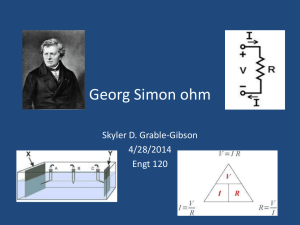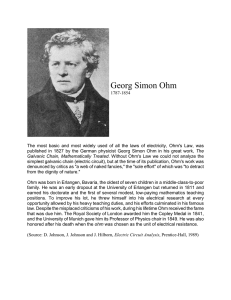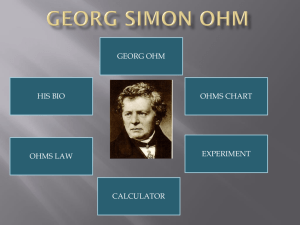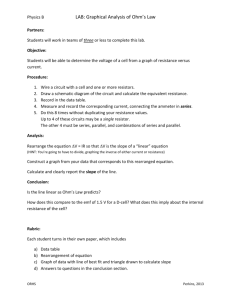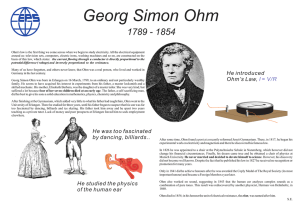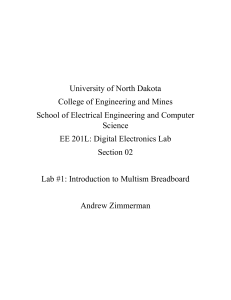Digital Multimeter James Nunley Kirsten Reid
advertisement
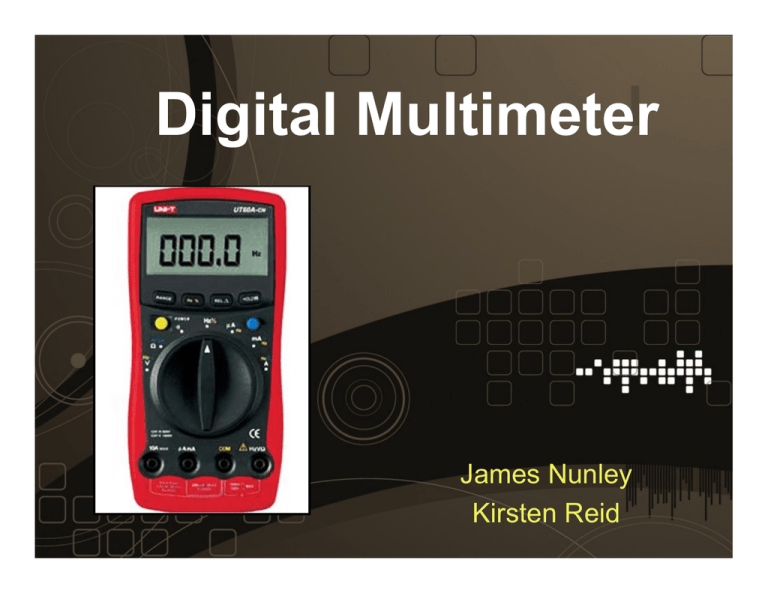
Digital Multimeter James Nunley Kirsten Reid Project Scope: • Have high / low leads and rotary dial similar to the ones in Lab • Voltage, current, and resistance measurements • Display on an LCD screen • Relatively close values for our resolution • Verified with Fluke Multimeter Plan of Attack 1. Figure out the measurement circuits for V, I, and R 2. Incorporate multiple channels on the A/D Converter 3. Determination of Resolution Hardware Components Hardware from Lab: Additional Hardware: – LCD Screen – A/D Converter – Potentiometer – Discrete Circuit Components (Resistors) – 6-Position Rotary Switch – Knob – Leads – Awesome Case Hardware Block Diagram Schematic Pseudocode Results • Reads: – Voltage 0 – 5V – Current 0.002 – 0.498 A – Resistance • Accuracy (Best): – +/- 20mV – +/- 2 mA • 5 – 5kOhm • 5k – 50kOhm • 50k – 500kOhm – +/- 3 Ohm – +/- 81 Ohm – +/- 1324 Ohm Obstacles and Opportunities for Improvement Obstacles: • Didn’t start in small steps, had to start new • Figuring out A/D values corresponding to Voltages • Floating inputs to PTM needed to be pulled down • Limitations in circuit measuring techniques from lo lead node Improvements: • Better accuracy with signal conditioning – Op Amps, diodes, etc. • Inclusion of AC signals with AC/DC rectifier • Continuity function • Frequency Measurement of AC signals Questions





